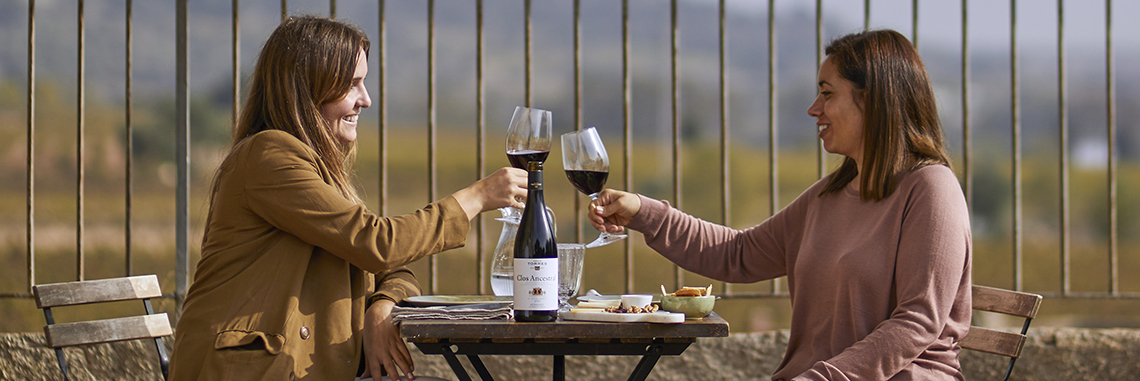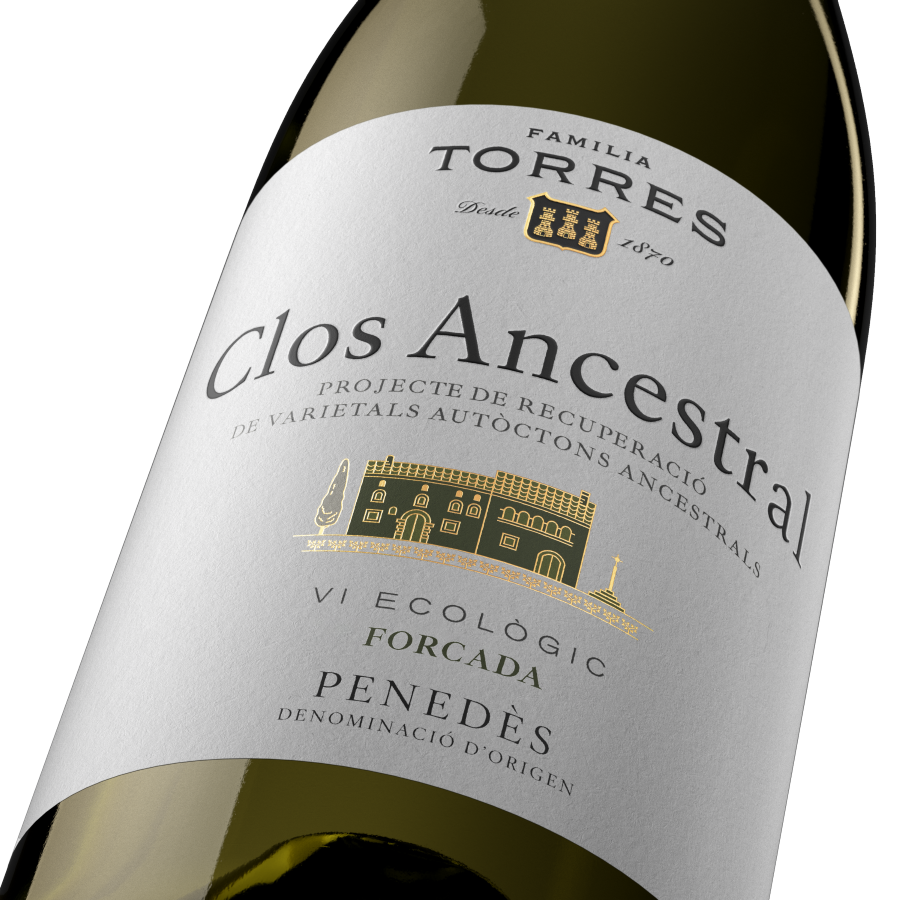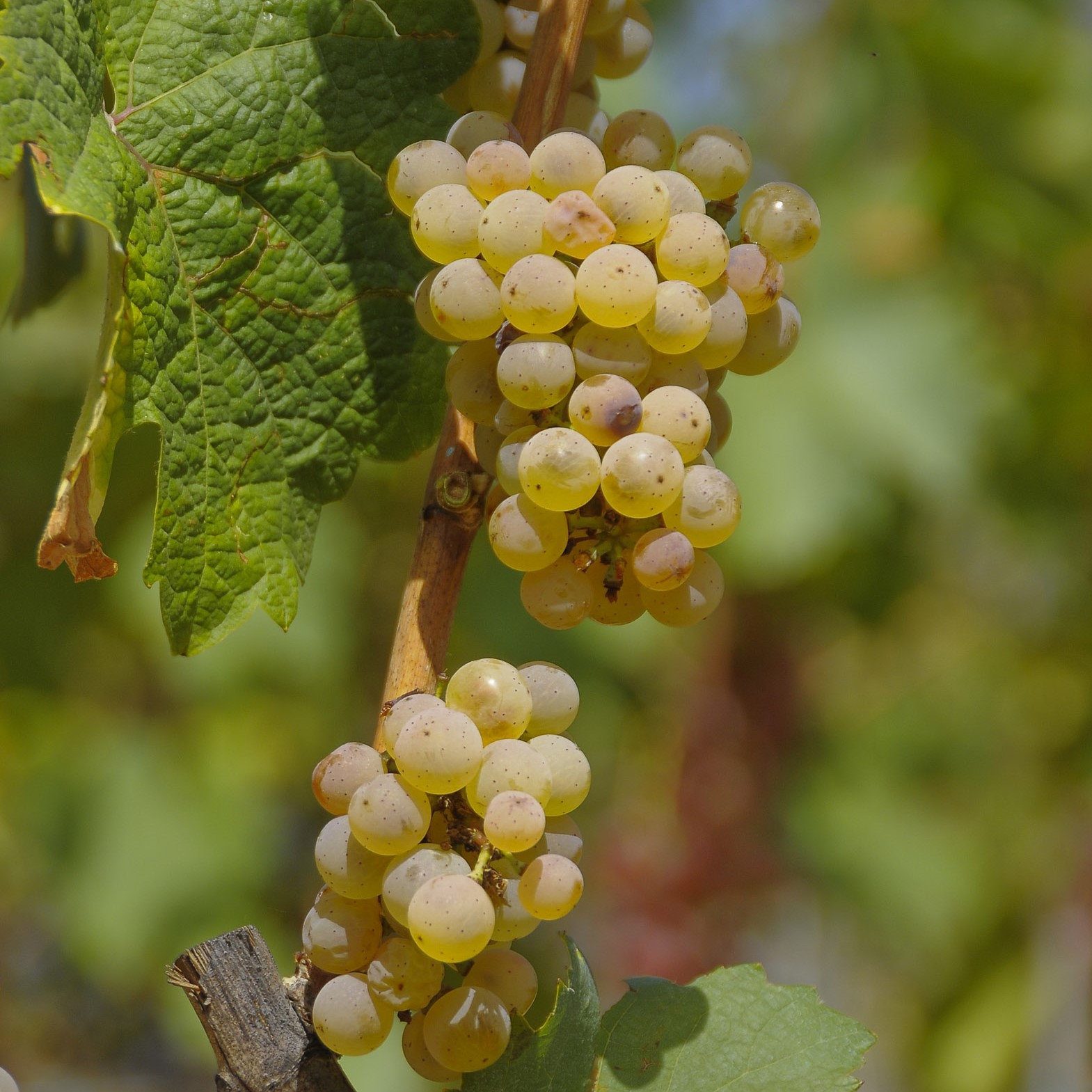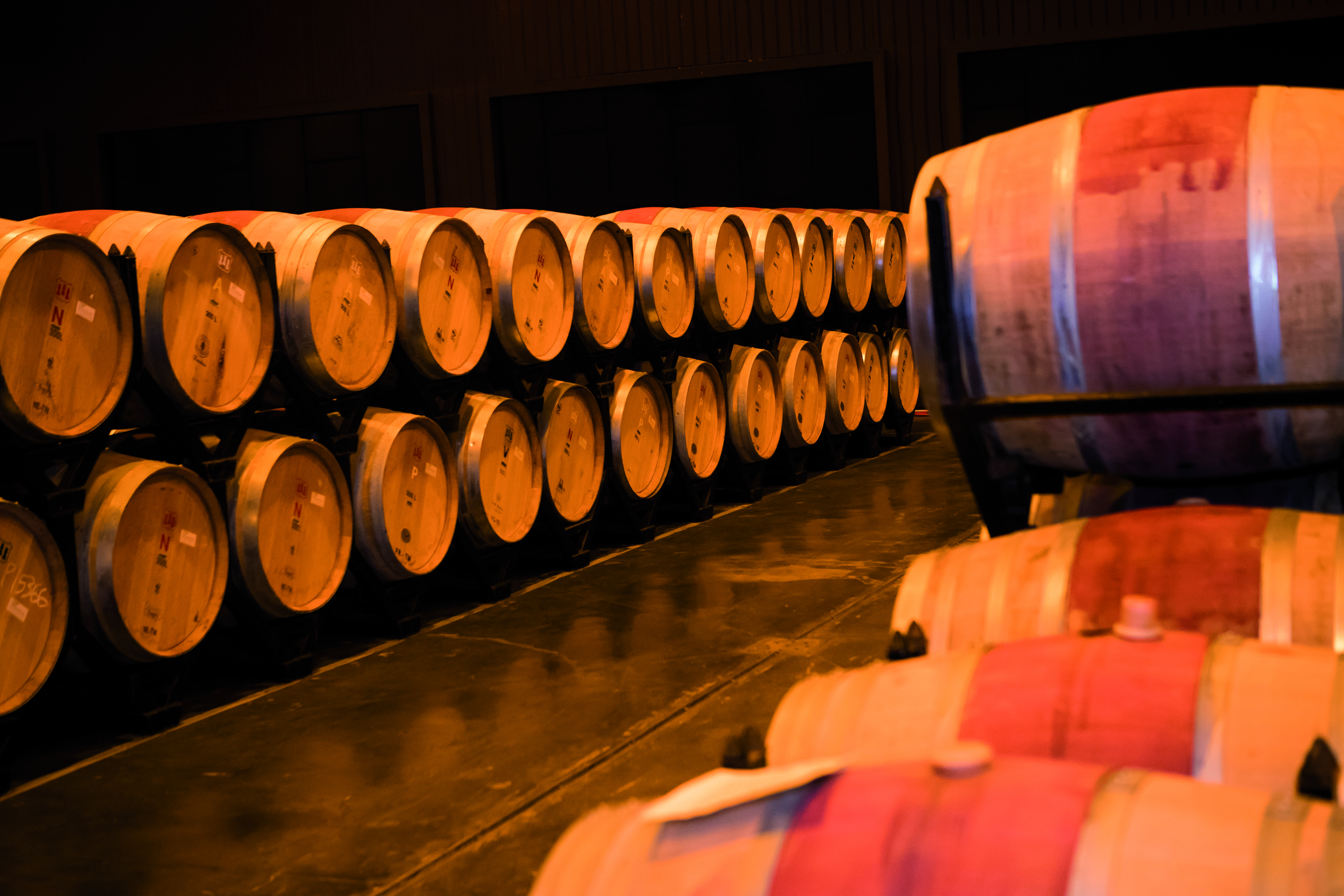HOW TO ENJOY WINE WITHOUT BEING AN EXPERT

Useful tips and thoughts for wine world novices
During its journey, a wine tells us a story, describing its provenance, revealing details about how it was made, how it evolved. The wine invites us to explore its varietal soul with our senses – (re)interpreting, deciphering, understanding, and enjoying the wine to then store it in our archive of sensory experiences.
1. Deciphering the Label to Make the Right Choice
- Whether flashy or subtle, elegant, classic or provocative, wine labels are more than an aesthetic matter. Knowing how to interpret the information that appears on them – how to read between the lines – can be incredibly useful when it comes to choosing a wine that coincides with our oenological preferences.
Information about provenance, vintage, varieties, ageing (whether oaked or unoaked) tell us much more than you might imagine. A correct reading and interpretation of these parameters will refine your decision-making and prevent unpleasant surprises.

Label of the wine Clos Ancestral Blanco, from DO Penedès
Provenance
- Given the vastness of the wine world, it needs to be divided into several categories so we can begin to understand all its characteristics. We can find our first provenance-related clue in the climate and how this relates to fruit ripeness:
Warm Climate Wines vs Cool Climate Wines: It Makes a Difference.
- Warm climate regions tend to be more stable in their average annual temperature. This means the gradual decrease in temperature between summer and autumn contributes to the successful maturation of the grapes, albeit at the expense of some of their natural acidity.
Warm climates produce grapes with riper notes and less acidity. By the same token, alcohol content tends to be higher. On the palate, they feel full and voluminous.
- When it comes to cool climates, it is worth noting that in many of these countries, the maximum temperatures are the same as those in more temperate climates. The difference lies in the far more abrupt change in temperature during the harvest season, which has a significant impact on the aroma profile and flavour of the wine.
The cold preserves a high level of natural fruit acidity, which produces wines that seem nervy and lean due to the elevated freshness.
-
The ripeness of the fruit at harvest time also provides us with crucial information to better understand the flavour profile of a wine and decide whether it fits what we are looking for. But…where do we find this information?
-
Terms such as “round or ripe tannins” usually refer to a wine with a ripe, warm fruit expression.
-
The term “balanced” tells us the wine has a noticeably fresh profile with high acidity.
Important: Vintage, Varieties, and Length of Oak Ageing
- Let’s begin with the assumption that every wine on the market is intended to be consumed relatively soon after its release. Even so, the characteristics of the vintage matter a great deal. They can add very ripe nuances to a cool climate wine or accentuate the fruit acidity in a warm climate wine if the region experienced a cool summer.
If the acidity dominates the overall wine, we can assume this is an early-harvest vintage. By contrast, when the fruit notes are intense and warm, we are in the presence of fully ripened grapes.
-
As you can see, the relationship between climate and ripeness is essential to understanding a wine. However, the effects of climate change are threatening to exacerbate the differences that cause inconsistencies between vintages.
Varieties
- Much like fruit aromas, we might inherently prefer some varieties over others. However, as noted earlier, the same variety may offer very different nuances depending on the wine’s provenance – we should be aware of this.
For instance, a Central European Riesling from cool regions like Austria or Germany will give us excellent acidity and elegant freshness reminiscent of citrus and green fruit.

Cluster of Riesling grapes (DO Penedès)
- In the Penedès, the same variety – as exemplified by Familia Torres’s Waltraud – will break with the varietal paradigm to offer ripe fruit notes and an unctuous glycerol texture derived from the alcohol content, characteristic of warmer climates.
Age, Oak Ageing, and Bottle Maturation
-
Once we understand that not all varieties are equally well suited to oak ageing, we have mastered an important step. Beyond that, let your organoleptic preferences dictate the rest.
-
If you are partial to frugal fruit freshness in red wines, you’ll want to avoid lengthy barrel ageing, because the oak disguises the true varietal expression.
-
By contrast, if you are looking for a certain complexity and nuances, partial oak ageing (3 to 8 months) will add complex notes of vanilla, tobacco, and coffee, as well as softening tannins and contributing to the wine’s colour and stabilization.
In its youth, the wine will appear impetuous and bold, lively and inexperienced, vibrant and electric. Only after reposing and maturing in the silent embrace of oak does the wine reveal its mature and balanced self. The fruit aromas embody the wine’s jovial side, whereas ageing notes, enveloped in spices and warmth, offer us the benefits of experience and contemplative enjoyment. After a wine reaches drinking maturity, it begins to decline. This is inevitable, but whether it does so elegantly and gradually depend on its essence and the care it receives. If so, it will leave a lasting impression.

Wine ageing in oak barrels at the Waltraud Winery (DO Penedès)
2. Wine Service: Tasting Tips and the Importance of Oxygen
- How we serve the wine, whether directly from the bottle or from a decanter, as well as the shape, size, and thickness of the glass, impact the expressive potential of the wine and its evolution, thereby modifying our sensory perception. This is the reason for the array of glassware that will provide us with different gustatory impressions as the inevitable interaction between wine and oxygen unfolds.
- As a concrete example, let’s look at one of the latest and most notable additions to the Familia Torres portfolio, Secret del Priorat:
“Deeply opaque, cherry red colour. Impressive fruit intensity (blueberries, black forest fruit) with spicy black pepper notes and an elegant, terroir-imparted mineral nuance. Flavourful, rich, and complex on the palate, revealing velvety, fleshy tannins, so ripe it leaves a lingering aromatic trace reminiscent of dried figs and dates. A potent wine with great length and personality.”
- To grasp and appreciate how the notes described above develop organoleptically, they need to unfold properly, not only during the winemaking process and subsequent ageing, but also in the glass upon serving.
- When Secret del Priorat is poured into the glass, the wine enters a second act in its intimate relationship with the oxygen present in the environment, its life partner, so to speak. As it dissolves in the wine, the oxygen activates and modifies the aromas, culminating in the moment when the gaseous and liquid contents in the glass are balanced. This occurs when the pressure exerted on the glass is proportional to the levels of oxygen concentrated in the wine.
- A note on serving wine: if we serve directly from the bottle to the glass, the wine assimilates oxygen more slowly and progressively than when we do so from a decanter. And so, layer by layer, the wine reveals the subtle, mature notes imparted by oak ageing, at a varying pace and in constant search of balance and the complex “whole” that orbits our olfactory sense.
On the Serving Temperature
-
The first thing to know is that the serving temperature also affects the relationship between wine and oxygen, because it influences the volatility of the aromas.
Why the insistence on exact temperature? If the wine is excessively cold, we won’t be able to enjoy its qualities – the flavours and aromas will be muted – and if it is excessively warm, we will only notice the alcohol.
- This is why it is important to heed the recommendations indicated on the label. In the case of Secret del Priorat, serve between 14 and 16ºC. Not doing so risks exposing the wine to two potential problems: served too cold, the wine loses all its interesting aromas, whereas served too warm, the wine will seem very short-lived and unpleasantly alcoholic, deprived of whatever expression, personality and clues to its provenance it might otherwise reveal. In short, it will lose its identity.
The Importance of Glassware
- Regarding the shape and size of the glass, we will see that these factors influence the perception and diffusion of the wine’s aromatic expression. For instance, glasses with a narrower opening intensify the aromas, making them ideal for young wines or varieties with less aromatic potential.
For Secret del Priorat, we will want a moderately sized opening, neither too narrow nor too wide, but just large enough to allow the concealed ageing aromas – ripe, sublimated aromas of dried figs and dates – to unfold.
- And let’s not forget that the amount of wine we serve also modifies our perception. The more wine is in the glass, the harder it is for the aromas to effectively reach the nose, because the wine does not have the necessary space and distance to do so. Likewise, too much wine in the glass makes it difficult to swirl, thereby slowing down the oxygenation of the wine and with it the release of its heady contents.
3. The Tasting: Wine and Our Senses
On the one hand, we have the substance itself, the wine; the irremissible truth of its varieties and winemaking. On the other, we have our interpretation of the wine, and here our senses lead the way:
Glasses lined up for a wine tasting
Appearance
- To look and see. We know that the colour of the wine and its intensity give us valuable clues about its age and condition. Expert eyes might detect even more, including clues to how it was made. Whatever the case may be, you don’t have to be an expert taster to gain a visual impression of a wine.
Smell and Taste
-
They go hand in hand, one doesn’t make sense without the other. Our nose and palate communicate with each other almost instantly to figure out the true expression of the wine; its provenance; the ripeness of the fruit, the level of sweetness, etc.
-
Here our interpretation is key: in this dialogue, the nose might tell us about fresh fruit, while the sides of our tongue respond with acidity. On the tip of our tongue, alcohol and sweetness (sugar) will speak up loudly or timidly; and the weight of the wine will fill our mouth with opulent fruit or subtle, complex, oak-imparted notes.
When it comes to classifying wine aromas, let’s start with the basics. We broadly refer to three major groups:
-
Primary aromas: they derive from the actual grape and contribute those easily recognizable floral and fruit notes that distinguish one variety from another.
-
Secondary aromas: these derive from the winemaking process and are primarily acquired during fermentation.
-
Tertiary aromas: these are imparted by oak ageing and constitute what is also known as the “bouquet”. Here the fruit remains as a mature echo, usually complemented by notes imparted by the wood barrels and/or lees: vanilla, toffee, bread/pastry, coffee, spices, etc.
Mouthfeel: The Texture and Sensation of Wine on the Palate
-
In the glass and on our palate, the wine might display excellent acidity: light, slender, fine, nervy. Or it might reveal the opposite: potent alcohol and muscular structure, with arrogant, juvenile fruit that invades our mouth.
-
The tannins caress our palate with green astringency or gentle sweetness. The creamy textures and pastry notes of wines that age on their lees envelop the palate in warm comfort.
Given the vastness of wine culture, understanding the three topics discussed here, and enjoying the results, is a good way to begin discovering the many secrets and pleasures that wine has to offer.
